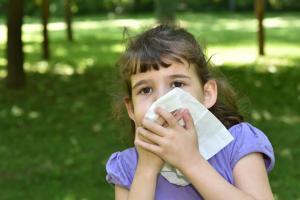The report said household air pollution from cooking and ambient air pollution caused more than 50 per cent of acute lower respiratory infections in children under 5 years of age in low- and middle-income countries

Representational Image
About 98 per cent of children under the age of five years in low- and middle-income countries, which include nations like India, were exposed to air pollution caused by finer particulate matters in 2016, according to a World Health Organisation study released Monday.
ADVERTISEMENT
In the report, titled 'Air Pollution and Child Health: Prescribing Clean Air', deaths of about 600,000 children under 15 years of age in 2016 were attributed to the joint effects of ambient and household air pollution.
The report said household air pollution from cooking and ambient air pollution caused more than 50 per cent of acute lower respiratory infections in children under 5 years of age in low- and middle-income countries.
The WHO report examines the heavy toll of both ambient (outside) and household air pollution on the health of the children across world, particularly in low- and middle-income countries, like India.
"In low- and middle-income countries around the world, 98% of all children under 5 are exposed to PM2.5 levels above WHO air quality guidelines. In comparison, in high-income countries, 52% of children under 5 are exposed to levels above WHO air quality guidelines," the study says.
"Globally, 93 per cent of the world's children under 18 years of age are exposed to ambient fine particulate matter (PM2.5) levels above WHO air quality guidelines, which include the 630 million of children under 5 years of age, and 1.8 billion of children under 15 years," the report said.
The PM2.5 (or particles with a diameter of less than 2.5 micrometres present in the air), also called "fine particulates", can be a matter of more serious health concern than PM10 (those with a diameter of less than 10 micrometres).
PM2.5 poses greater harm as being finer, it can easily be inhaled into the respiratory tract.
The PM2.5 has reached dangerous levels in New Delhi in the last two weeks. A thick blanket of haze engulfed the city Monday, and an overall Air Quality Index of 348 was recorded, which falls in the very poor category, according to data of the Central Pollution Control Board.
Air pollution is one of the leading threats to child health, accounting for almost 1 in 10 deaths in children under five years of age, the report noted.
The WHO report cited a case study that investigated whether exposure to PM2.5 during pregnancy was associated with low birth weight in an integrated rural-urban, mother-child cohort in Tamil Nadu.
"The researchers recruited 1285 women in the first trimester of pregnancy in primary health care centres and urban health posts and followed them until the birth of their child to collect data on maternal health, prenatal care, exposure to air pollution during pregnancy and the birthweight of the child," the study said.
They found that a 10 µg/m3 increase in exposure to PM2.5 during pregnancy was associated with a decrease in birth weight of 4 g and a 2 per cent increase in the prevalence of low birth weight.
"This study provided some of the first quantitative estimates of the effects of exposure to PM2.5 in India to birth weight. It contributed evidence of this association that is relevant for high-exposure settings in LMICs that experience the dual health burdens of ambient air pollution and household air pollution," it said.
The findings indicate that maternal exposure to PM2.5 should be considered with other risk factors for low birthweight in India. The study also provided baseline information for a new multi-country HAP intervention trial under way in Guatemala, India, Peru and Rwanda on the effects of clean fuel (in this case, LPG) use on maternal and child health The report quoted a case control study in India which showed a correlation between exposure to HAP from solid fuel combustion and the risk of contracting TB in children less than 5 years of age.
"The evidence suggests a positive association between exposure to air pollution and TB infection in children, although further research is needed," the report said.
Catch up on all the latest Crime, National, International and Hatke news here. Also, download the new mid-day Android and iOS apps to get latest updates
 Subscribe today by clicking the link and stay updated with the latest news!" Click here!
Subscribe today by clicking the link and stay updated with the latest news!" Click here!






